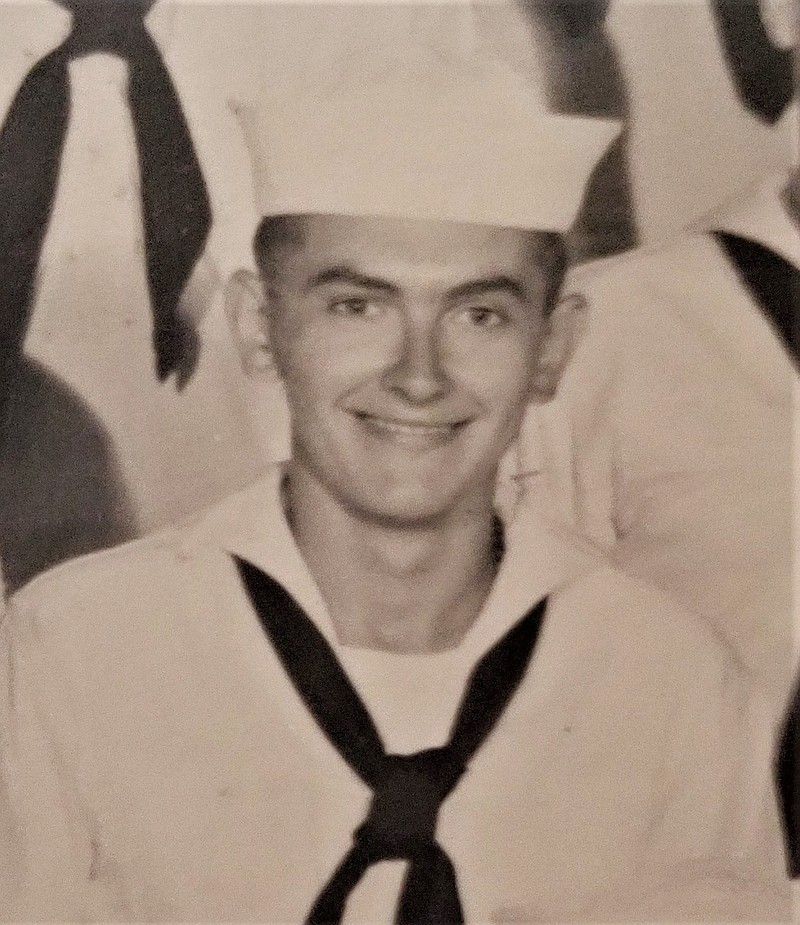"My sailors are students, and I am their teacher. I guide and influence the lives of these young men and women. In the final analysis, I will determine the quality of these sailors" - poignant affirmations of "The Chief Petty Officer's Pledge" that for decades have defined the life and work of local U.S. Navy retiree Bill Buehrle.
A 1955 graduate of Jefferson City Senior High School, Buehrle was fully prepared to marry his fiancée after high school. However, being unable to locate suitable employment to support a family, he looked to the military for the means to achieve financial stability.
"I enlisted in July 1956, and they sent me to basic training at Great Lakes (Naval Training Station) in Illinois," he said. "Then it was on to several months at basic sonar school in Key West Florida, learning basic electronics and using sonar equipment to locate submarines."
Upon completion of his initial training in May 1957, the following month Buehrle married his fiancée but the couple soon said their temporary goodbyes when Buehrle received assignment to the USS Bearss (DD-654) - a Fletcher-class destroyer built during World War II moored in Portsmouth, Virginia, for an overhaul.
"The guy I relieved wasn't assigned to the ship once I got there and before he had left, had basically torn apart the weapons systems and sonar," Buehrle said. "I had to put them back together and that was a great education because I had to learn everything quickly."
While assigned to the ship, the sailor went on to participate in several cruises in locations including the Mediterranean and the North and South Atlantic. However, he affirmed, the most interesting was the crew's participation in "Operation Argus" in 1958.
"They sent us with a group of ships somewhere off the coast of South Africa," recalled the veteran. "They detonated nuclear missiles high in the atmosphere; it was the brainchild of some scientist that believed that the detonations would form a shield that would interfere with the electronics of Russian weapons."
Following the series of atmospheric nuclear tests, Buehrle said, the USS Bearss navigated to a location under the detonation area where scientific personnel used equipment to measure radiation levels. This, Buehrle maintained, likely caused some of the cancers he and his fellow sailors experienced in later years.
"The long and short of it is I'm still here and that's all that counts," he grinned.
In 1960, the sailor and his wife welcomed their first and only child, a daughter they named Karen. The same year, Buehrle re-enlisted and received orders to serve as an instructor for anti-submarine warfare at the Fleet Training School in Norfolk, Virginia.
His next assignment came in March 1965, when he was sent to the Fleet Training Group at Guantanamo Bay, Cuba, spending the next year assessing the combat capabilities of the crews of various naval vessels and achieving the rank of chief petty officer.
"My commander thought I needed more education, and I was sent to a 26-week advanced electronics course in Key West in the summer of 1966," the former sailor said. "Halfway through, they pulled me out of the course and reassigned to the Bureau of Naval Personnel in Washington, D.C."
He continued, "That was probably the most important and rewarding assignment of my career. I was the guy that assigned enlisted personnel to their duty stations, whether it was duty on ship, shore, in recruiting or to a school.
"What I did in that position impacted a lot of careers."
Sadly, in 1971, an unexpected personal tragedy struck when the Buehrles lost their 10-year-old daughter to Ryes Syndrome at the Bethesda Naval Hospital. The following year, the grieving father was transferred to the Naval Material Atlantic Command in Norfolk.
"My job was to train both civilian and naval personnel on the planned maintenance for equipment used in the Trident sub program, which was a new type of missile being developed," he said. "That's what I did until retiring with my 20 years of service."
Throughout the next several years, the veteran lived in Virginia and was employed by defense contractors until forming his own consulting company in 1981. In 1983, he went to work as a program and department manager for Computer Sciences Corporation, remaining there until 1996.
"My wife's health was really beginning to decline at that time so we sold our home and moved back to Missouri," he said. Sorrowfully, he added, "I became her caregiver for the next few years and she passed away in 2003, on the same day our daughter died 32 years earlier."
The veteran has since met and married Rosalie, and the couple continues to reside in Jefferson City. His decades of service to the nation, Buehrle sagely said, were defined by his responsibility as a chief petty officer to provide the greatest guidance possible to up and coming sailors based upon his own treasure of experiences.
"The military gave me purpose in life," he proudly affirmed, "and a satisfaction that I could use my God-given skills to help others better themselves.
And I learned how to manage projects, and it seems like I'm still managing several aspects of my life to this day by using the lessons provided by the Navy."
He added, "As our pledge states, 'I am a Chief Petty Officer in the United States Navy I serve my country and her people with pride and honor.' And I am certainly proud that I had the opportunities that I did in the service."
Jeremy P. Amick writes on behalf of the Silver Star Families of America.


